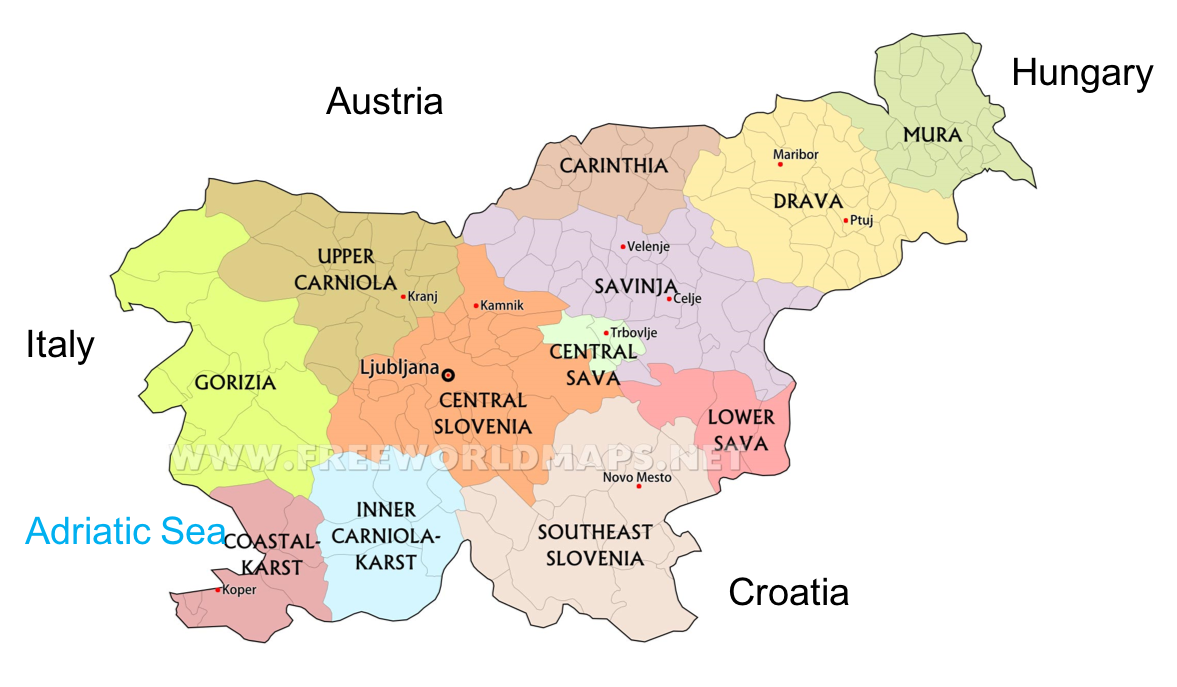Slovenia
Salt intake of the Slovene population assessed by 24 h urinary sodium excretion
Cirila Hlastan Ribic, Jozica Maucec Zakotnik, Lidija Vertnik, Miljana Vegnuti and Francesco P Cappuccio
Public Health Nutrition 2010; 13(11):1803–1809
Abstract
Objective: To investigate average sodium excretion in 24 h urine as a marker for salt intake in the Slovene population.
Design: Salt intake was determined by measuring sodium excretion in 24 h urine collected from a representative sample of geographically diverse Slovene adults. Setting: Slovenia.
Subjects: A random sample of 600 adults aged 25–65 years was generated from census data. The effective sample yield was 143 people, 42.7% men and 57.3% women.
Results: Urinary sodium excretion was significantly higher in men (220.9 (SD 86.0) mmol Na/d) than in women (169.8 (SD 73.8) mmol Na/d); t test=14.5, P<0.001. Average salt intake was 11.3 (SD 4.9) g/d, higher in men than in women (13.0 (SD 5.1) v. 9.9 (SD 4.3) g/d, respectively). Average intakes of salt among regions were not significantly different. Salt intake increases slightly with increasing age, but there was no significant correlation between age and salt intake. Salt intake was increased with BMI (r=0.384, P<0.001).
Conclusions: Salt intake in Slovene adults, especially in men, exceeds the WHO recommended population nutrient intake goal of 5 g by more than twofold. A national programme for reducing salt intake in Slovenia needs to be implemented through systematic efforts including public education and involving the health-care sector and the food industry.
Estimation of sodium availability in food in Slovenia: results from household food purchase data from 2000 to 2009
Cirila Hlastan Ribič, Jožica Maučec Zakotnik, Barbara Koroušić Seljak, Rok Poličnik, Urška Blaznik, Nataša Fidler Mis, Ivan Eržen, Chen Ji, Francesco P. Cappuccio
Slovenian Journal of Public Health (Zdrav Var) 2014; 53: 209–219
Abstract
Introduction: The main aim of the study was to estimate average daily sodium availability of Slovenian consumers based on the food purchase data for the period 2000-2009. The secondary aim was to look for food group contributors to sodium availability.
Methods: Food purchase records (Household Budget Survey) as well as country-specific reference values and food composition information were used to estimate mean sodium availability of purchased foods (grams of sodium/person/ day - g Na/p/day) as well as food groups and foods with the largest contribution to the total sodium availability.
Discussion and results: The mean sodium availability of purchased foods decreased in the period 2000-2009 and was on average 2,104±132 mg Na/p/day, not accounting for ready-made meals, most semi-prepared foods and adding salt during cooking and at the table. The key food group contributors of sodium in Slovenia were breads and bakery products (35.0%), meat products (27.9%), processed vegetables (6.6%) and cheeses (5.3%).
Conclusions: Notwithstanding the smaller purchased quantities of higher-sodium foods (e.g. sausages, prosciutto, dry meat, pickled cucumbers) in comparison to larger purchased quantities of the medium-sodium foods (e.g. white bread, mixed bread, brown bread, milk, rolls), both food groups contribute significant amounts of sodium in the diets of Slovenians.


Salt intake (g/day)* in Slovenia (2007)
| Mean | SD | |
| Men (n=61) | 13.6 | 5.3 |
| Women (n=82) | 10.4 | 4.5 |
| All (n=143) | 11.8 | 5.1 |
*adjusted for urinary Na as 95% of total Na intake
Method: 24h urine collection
Public Health Nutrition (2010)
Lidl Slovenia Commits To Salt Reduction (2017)
WHO Country Office, Slovenia
Trubarjeva c. 2
Ljubljana SI-1000
Tel.: +386 1 244 15 85, +386 5 996 95 31
Fax: +386 1 244 15 84
